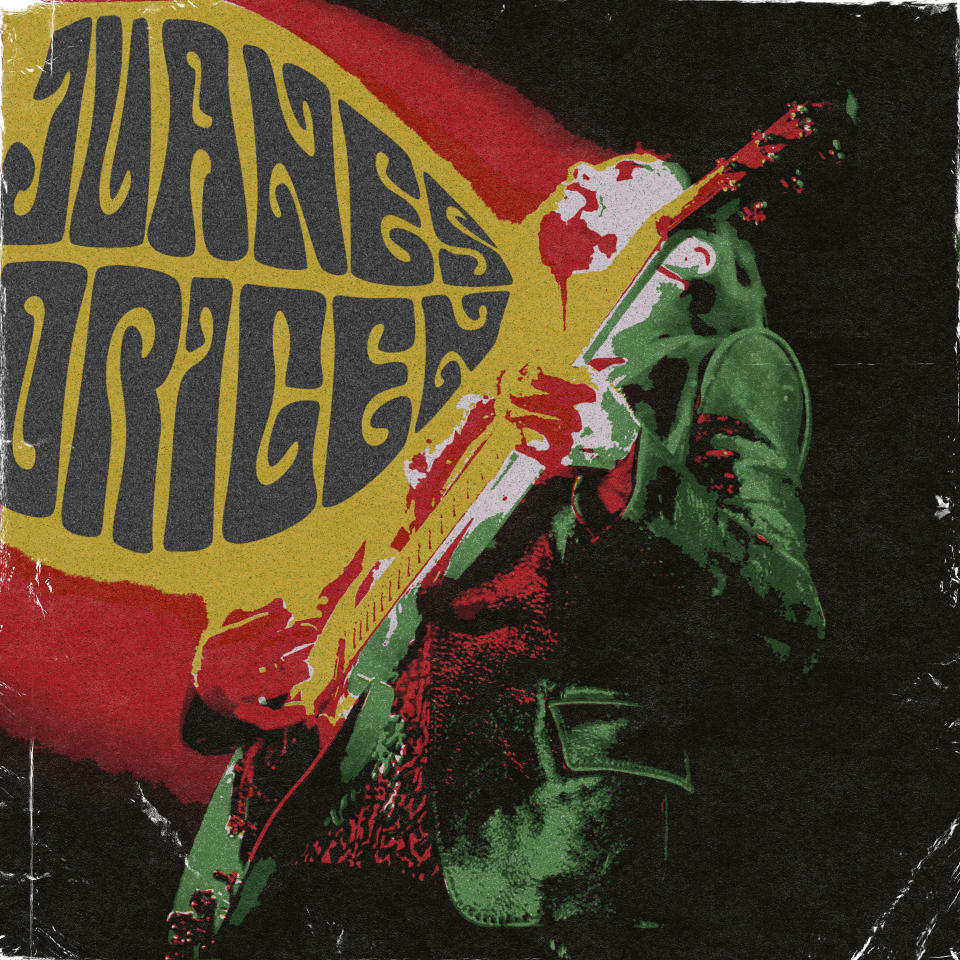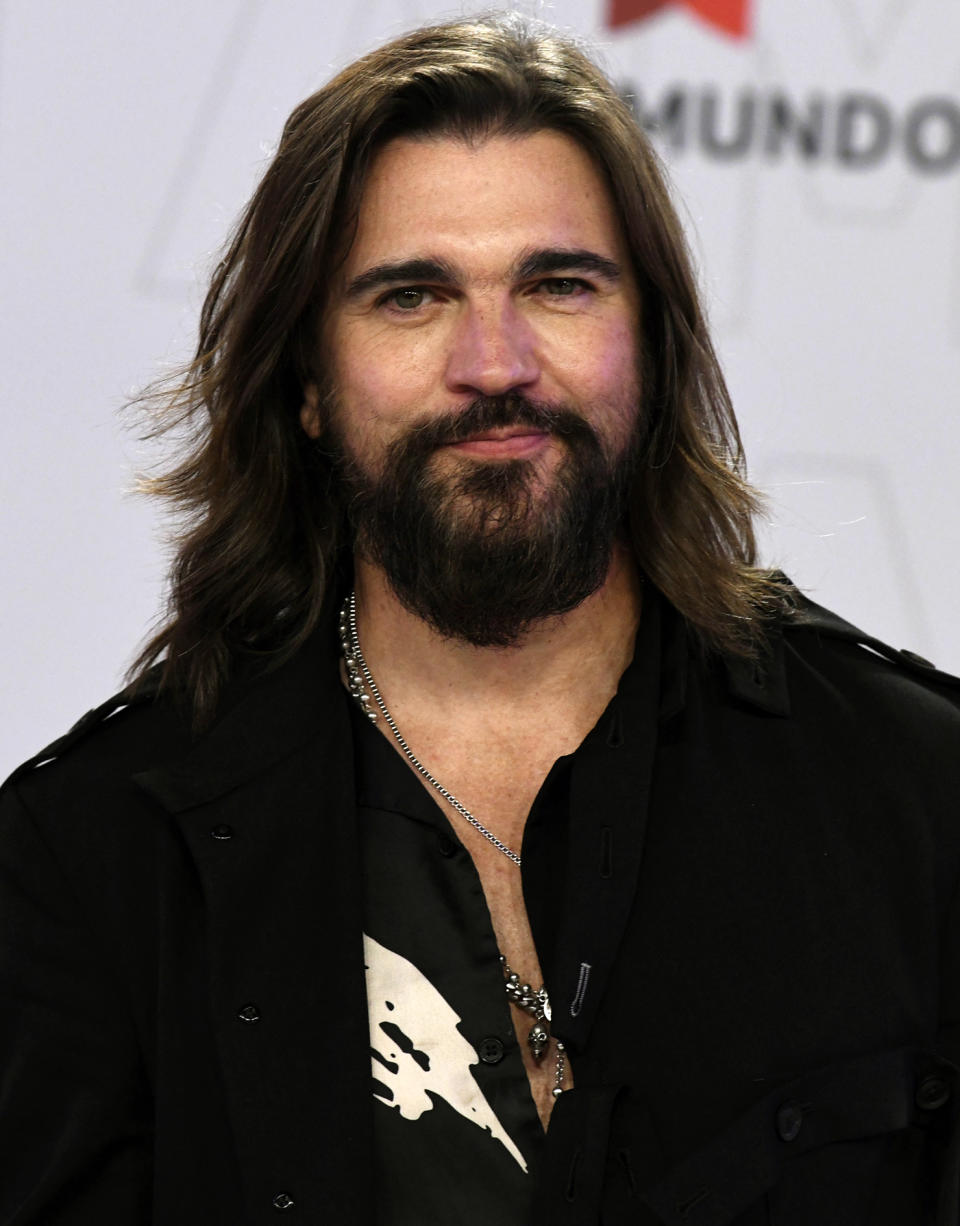Juanes visits the origins of his inspiration in 10th album
NEW YORK (AP) — After experimenting with different types of music, Juanes returns to his roots with “Origen,” a covers album in which he pays tribute to the most influential artists in his life and career, from Joe Arroyo and Bruce Springsteen to Bob Marley and Juan Luis Guerra.
Through 12 songs including Carlos Gardel's “Volver,” Joaquín Sabina's “Y Nos Dieron Las Diez” and Bob Marley's “Could You Be Loved,” the Colombian rock star travels to his childhood and adolescence for his 10th studio album.
“I think it was something that my soul was asking for,” Juanes said in a recent video interview from Miami. “After experimenting with different types of music, at this point in my career and at my age I realized that returning to that origin was very necessary.”
The album encompasses styles as diverse as tango, merengue, heavy metal, folk, reggae, vallenato, pop and, of course, rock. It includes the singles “El Amor Después Del Amor” by Fito Páez, in a rock and gospel version, and Springsteen’s classic “Dancing In The Dark” as a slower folk and in Spanish.
Released on Friday by Universal Music Latin, “Origen” is accompanied by a documentary on Amazon Prime, produced by José Tillán and directed by Kacho López, in which Juanes explains why he chose each of the songs. He also talks to Guerra, Sabina and Páez about their songs, and channels iconic performances from the '60s through the '80s including the first Beatles appearance on “The Ed Sullivan Show.”
The two-time Grammy and 23-time Latin Grammy winner told the AP about the influence of Kraken — a rock band from his native Medellin — on his decision to be a musician and laid out how he plans to make music from now on.
Answers have been edited from brevity and clarity.
AP: The album includes 12 songs. Were any left that you would have liked to include?
JUANES: So many! I made a giant playlist of songs that had connected with me in my life, but we chose these 12 for many powerful reasons. These are the ones that had more impact on the memory of my youth, my adolescence, my childhood. It was an incredible exercise to put on another song sort of like a dress, as if I were an actor.
AP: And you don’t only wear it metaphorically. In the documentary, you channel the Beatles and other artists, transforming yourself with wigs and make up and outfits. What was that like?
JUANES: We had a lot of fun doing this documentary. We wanted to have that visual element and also we took a risk by doing this, because we said, “What if we are like the Beatles in ‘The Ed Sullivan Show’, when they came to the United States, but singing ‘Volver’ by Gardel, or Juan Gabriel?” It was so fun just to experience that kind of acting.
AP: You also show in the documentary the reactions of some creators of the original songs to your covers. What was Bruce Springsteen’s response to your Spanish version of “Dancing in the Dark?”
JUANES: He loved the song. We sent the song to his management months ago before we shot the documentary and he loved it. He said, “OK, this is good for me, you guys can release that.” And for me that was huge, you know? We got his OK and that was really important. Not just from him, but from all the other artists.
AP: You sing “Could You Be Loved” in English. Why translate “Dancing in the Dark?”
JUANES: You know, when I went to Bruce Springsteen’s song and I saw the lyrics, I found the song very powerful in a way that is very human and very vulnerable, and I think at that point — that was during COVID — I just wanted for all Spanish speaking people to understand it. And we take the song like to a mid-tempo, it’s more like a folk kind of vibe, but with the lyrics is Spanish it sounds so powerful. I just love it.
AP: You played quite with the rhythms of the songs. Guerra's “La Bilirrubina” is no longer only a merengue, for instance.
JUANES: Part of the initial idea was not to stay close to the original because competing against those versions would be impossible. So what we did was getting away as much as we could, while respecting the melody and the tempo of the song and the tonality of most of the songs. I co-produced this album with Sebastián Krys and our work together was very special. It was like when we were in school and the teacher said “free drawing,” that you could do whatever you wanted, and that creative freedom was very cool — being able to go for the bachata, the reggae, bringing elements of Colombian percussion, the guitar's rock, the drums. And the way we recorded the album was very organic, there is nothing programmed here, these are people playing. I really needed that too.
AP: You talk in the documentary about the band Kraken and what a great influence it had on you. What memories do you have of that time?
JUANES: Well, with Kraken, I was in high school and I remember Hugo Restrepo going to school and it was as if a hero came to school because he was Kraken’s guitarist. And at that time there was no rock music playing on commercial radio, it was something impossible. Kraken was one of those first outstanding bands. It was the first rock concert I went to and to see how this character and the band itself impacted me — when I saw them I said: “Wait! I want to be up there! I want to do that for life. It transformed me so much, that I remember that concert like it was yesterday.
AP: Now that you’ve gone back to your origins, where do you see yourself moving forward?
JUANES: I'm definitely gonna keep going in the same direction, close to this sound, you know, organic and rock oriented, and also bring elements from folk music like percussion, all the percussion from the Pacific and the Atlantic and the Caribbean, I really love that kind of thing. I wanna play with musicians. I wanna feel the drum behind me and the bass guitar and the guitar and the keyboards, and I wanna feel that on the stage and also on the recording studio, because I’ve been experimenting with different types of music and actually I work by myself with a computer most of the time, but I wanna record again with musicians. I really love that and I missed that a lot.
___
Sigal Ratner-Arias is on Twitter at https://twitter.com/sigalratner.


